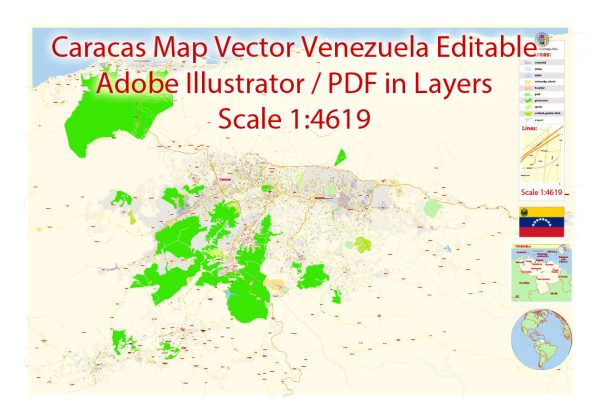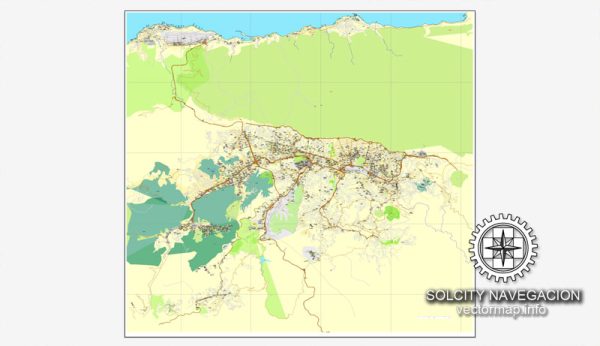Caracas, the capital city of Venezuela, has a rich history of urban development that spans several centuries. The city’s growth and transformation have been influenced by a variety of historical, political, and economic factors. Here’s an overview of the history of urban development in Caracas:
- Colonial Era (16th-18th Century): Caracas was founded in 1567 by Spanish conquistadors under the leadership of Diego de Losada. The city was established as a colonial settlement, and its layout followed the typical grid pattern of Spanish colonial towns. The Plaza Bolívar, originally known as Plaza Mayor, was the center of the city and remains a prominent landmark to this day. During this period, Caracas developed as a regional administrative and trading center.
- Independence Era (19th Century): Caracas played a crucial role in the Venezuelan War of Independence against Spanish colonial rule. The city saw significant upheaval and change during the early 19th century as the struggle for independence intensified. In 1811, Venezuela declared its independence from Spain in Caracas, and the city became the epicenter of revolutionary activities.
- Post-Independence and 20th Century: After gaining independence in the early 19th century, Caracas continued to grow and modernize. The 19th and 20th centuries saw the development of infrastructure, including roads, public buildings, and parks. The city’s population increased as it became a hub for commerce and government.
- Oil Boom (20th Century): In the early 20th century, the discovery of oil in Venezuela led to an economic boom, and Caracas experienced rapid growth and development. This period of prosperity allowed for the construction of modern infrastructure, including skyscrapers, highways, and public transportation systems. The city expanded both vertically and horizontally.
- Informal Settlements and Urbanization: Despite the economic prosperity brought by oil, Caracas also faced challenges related to rapid urbanization. Informal settlements, known as “barrios,” developed on the outskirts of the city, as people from rural areas migrated to the capital in search of work and better living conditions. These barrios became a significant aspect of Caracas’s urban landscape.
- Political and Social Change: Caracas has been a focal point for political and social movements throughout its history. The city has been at the center of numerous political demonstrations and upheavals, which have influenced its development and urban fabric.
- Challenges and Contemporary Urban Issues: Today, Caracas faces numerous urban challenges, including traffic congestion, air pollution, inadequate public transportation, and security concerns. The city’s infrastructure has struggled to keep up with its population growth, and there have been social and political tensions that have affected urban development and governance.
In summary, Caracas has a diverse and complex history of urban development that reflects the interplay of historical events, economic shifts, and political changes. While the city has experienced periods of growth and modernization, it has also grappled with challenges related to urbanization, inequality, and political instability. Understanding the history of Caracas is essential for comprehending its present-day urban landscape and ongoing urban issues.



 Author: Kirill Shrayber, Ph.D.
Author: Kirill Shrayber, Ph.D.